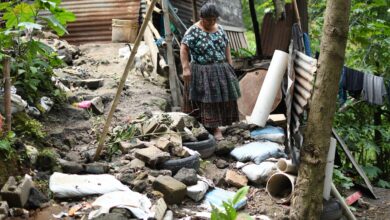Interview: Is Breast Pain Normal? What Signs Should Alarm?
October is a month dedicated to raising awareness about breast cancer prevention. We interviewed Dr. Johanna Paola Ibarra, a specialist in Breast and Soft Tissue Surgery at the National Institute of Cancerology of Colombia, to clarify doubts

Photo: Freepik
LatinAmerican Post | María Fernanda Ramírez Ramos
Escucha este artículo
Leer en español: Entrevista: ¿Es normal el dolor en los senos? ¿qué signos deben alarmar?
According to figures from the World Health Organization, breast cancer is the most common type of cancer. In 2020, there were more than 2.2 million cases around the world. In the Americas each year more than 491,000 are diagnosed and around 106,391 die from this disease, being the deadliest cancer for women, according to data from the Pan American Health Organization. This organization estimates that by 2040 diagnoses will increase by 39%.
Treatment for breast cancer is especially effective when detected early. For this reason, prevention and constant monitoring of any alarm symptoms are essential. In Latinamerican Post, we interviewed Dr. Johanna Paola Ibarra, a surgeon at the Universidad Libre de Barranquilla, Subspecialist in breast and soft tissue surgery at the National Cancer Institute.
Latin American Post:Breast Pain is a recurring symptom that people often report. However, it can cause concern. How normal is it to feel pain in the breasts? What type of pain is normal and what should generate an alarm?
Dr. Ibarra: Breast pain or mastalgia is physiological in most cases. Up to 75% of women have mastalgia. Generally, it is associated with hormonal changes, which are cyclical mastalgia, associated with the menstrual cycle. There is also non-cyclical mastalgia, which occurs more than anything else in patients over 40 years of age, associated with hormonal disorders due to menopause.
Breast pain is rarely associated with cancer, so we don't usually think of it as a warning sign. Suddenly, when it is constant if it does not improve, it can also be associated with external pathologies of the breast, such as inflammation or muscle-type pain, which radiate in the breast but are not usually original in it.
LP: Are there habits that allow us to avoid breast pain, for example, before menstruation?
DI: For patients who have a lot of cyclical mastalgia, we recommend that they wear comfortable clothing, non-wired bras, and topical pain relievers before the menstrual period arrives to reduce the symptoms a little.
LP: To prevent or detect breast cancer early, it is essential to identify changes in them. However, the breasts have changed with hormonal fluctuation throughout the month. Is there a time in the cycle when it is more convenient to examine them to detect any anomaly?
To perform breast self-examination, clinical breast examination, or diagnostic studies such as mammography or ultrasound, we recommend that they be performed 8 or 10 days after the menstrual period because nodularity and breast symptoms decrease and the tissue can be better appreciated. Then, it is possible to do a better clinical examination of the breast.
In case the patient does not menstruate, because she no longer has her period, it is recommended that she choose a specific date of the month to do the breast self-examination. Regular clinical breast exams are also recommended.
LP: What are the symptoms that should be paid attention to the most in preventing breast cancer?
Presence of a mass or lump in the breast or armpit, indentations in the skin; changes in skin color, discharge through the nipple, especially blood, spontaneously; retraction or sinking of the nipple-areola complex; the edema also of the skin, which we know as orange peel, changes in the shape of the breast when we compare with the contralateral breast. These are the most suggestive or alarm signs to detect breast cancer.
LP: Breast cancer, although less frequent, can also occur in male breasts. In this case, are the warning symptoms the same?
In men, breast cancer is rare. It occurs in about 1%. Generally, it is associated with a hereditary component, a genetic mutation. Diagnosis and treatment are the same as in women. The symptoms are the same. Men, in general, tend to consult for rapidly growing masses or lumps. Since the mother is smaller, it is easier to recognize the masses around the male breast.
We recommend you read: Cancer in Latin America: the main cause of premature death
Before any warning sign, it is best to go to the doctor to perform the corresponding tests and rule out any type of disease in the breasts. It is necessary to remember that after the age of 40 it is important to have a medical screening every year. Also, you need to have a healthy lifestyle. Some risk factors include "aging, obesity, harmful use of alcohol, family history of breast cancer, history of radiation exposure, reproductive history (such as the age of onset of menstrual periods and age at first pregnancy), tobacco use, and postmenopausal hormone therapy," says PAHO.




